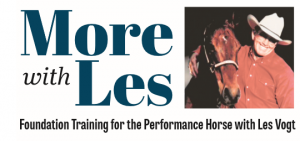 Now that you’ve established some body control in your horse with the exercises you’ve worked on in the previous levels, it’s time to start doing something really fun! The turnaround, when it’s done well, can be one of the most exciting parts of a reining pattern, both to ride and to watch!
Now that you’ve established some body control in your horse with the exercises you’ve worked on in the previous levels, it’s time to start doing something really fun! The turnaround, when it’s done well, can be one of the most exciting parts of a reining pattern, both to ride and to watch!
I’ve adjusted my turnaround program in recent years, and I really like the results that I’ve gotten from the change. I used to use the neck rein right off the bat to make the horse’s shoulders move over, but I don’t do that anymore. What I concentrate on now is creating the correct lateral frame, or bend, and then driving the horse into it—that is, riding the back end of the horse up to the front. It’s really just collection— taking the form of a spin. Your end result is a really cool turnaround. It makes the spin a lot lower and tighter—what we call “wrappy”. It even appears to be faster! It’s really not, but the circumference is tighter and so the horse appears to be moving more quickly So here’s some theory for you to think So here’s some theory for you to think about before you get started. By riding the back of the horse up under the front, he’ll create his own axis, because as he learns to really step around with his front legs, his back ones will naturally find the most efficient place to be. If you pull the front end to the back, it means you’re trying to lock into an axis for that horse to rotate on—that you’re trying to hold the back legs in place while you hope the front ones will keep going, and that approach just won’t work. When your energy comes from the back, you don’t need to look for the center of the spin; it just happens.
A critical component of the turn is the bend. The head and neck always have to be bent enough so that you can see the bare outline, or just the contours, of the eyeball. That would be a good bend for almost every horse. The reason this is so critical is because when the neck bends or flexes to the side, the shoulder blades rotate to the side as well. I like to think of it as a wagon, where the head and the neck are the tongue and the shoulders are the front axle. When the shoulder blades actually tip to the left (because the head and neck have), then the right shoulder is farther ahead, allowing the horse to reach across with the right leg without stepping on himself. It gives the horse the mechanical clearance he needs to step across cleanly.
The mechanics of the hindquarters are (if turning to the left ) that the left hind foot or leg will become the pivot foot, or the axis, of the circle. The speed in a turn is generated from the outside hind leg. That outside leg is the driver, and it pushes the whole horse around. So if we want to generate more speed, what do we need to energize? That outside hind leg. We don’t need to motivate the whole horse to give us more speed, just that leg. If we try to get aft er the whole horse for more speed, then the whole horse might just tense up, and we lose the point, which is to relax, get down and crawl around in that turn.
So by concentrating on driving the horse the turnaround should always be thought of as a fast-forward motion, which, because of the angle, is directed around in the turn. Novice riders invariably want to pull back during the turn, and there is nothing that will mess it up faster. Your job is to direct the energy by maintaining the correct bend, and then driving your horse into the maneuver.
–Les
Les Vogt has won more than 15 World Championships, including two wins at the NRCHA Snaffle Bit Futurity. Today Les focuses is giving clinics around the world and developing products for the performance horseman. To learn more about Les and to see his clinic schedule, visit www.lesvogt.com.
Leave a Comment
All fields must be filled in to leave a message.